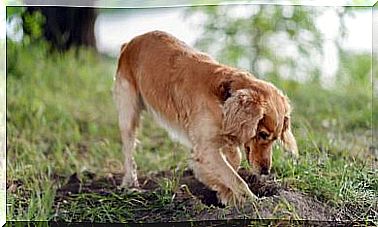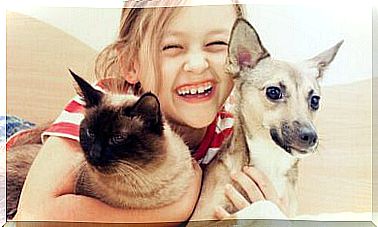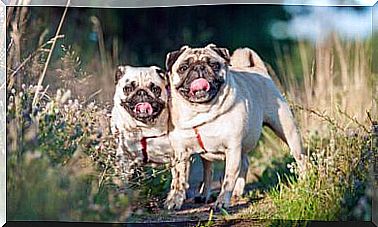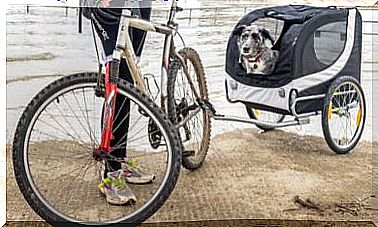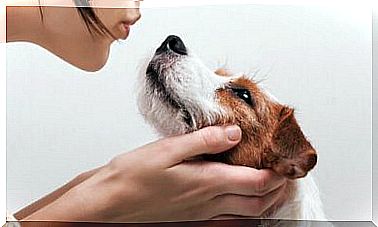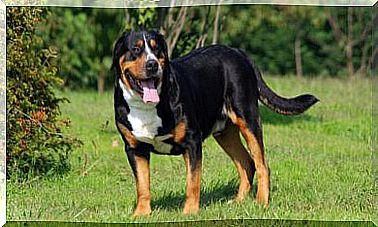Dog Behavior When Petted
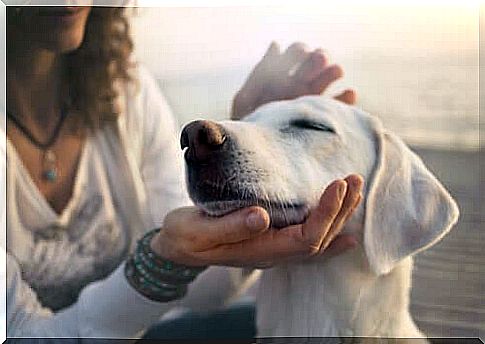
The complex behaviors of dogs, such as their body postures and facial expressions, can sometimes be contrary to those of humans. This can lead to situations where individuals, dogs and humans, misunderstand each other.
Just as there are people with great social skills who love to physically interact with other humans, there are people who don’t. The same logic applies to dogs. Not all dogs like physical contact, much less if it comes from unknown humans or humans who do not belong to their family group and with whom they do not share a good bond.
Should you pet dogs?
Understanding a dog’s behavioral responses is crucial when it comes to having a physical interaction with him. People, whether or not we have a family relationship with a dog, tend to initiate communication through physical contact. However, dogs often reserve this type of interaction for established members of their social group .
On the other hand, we don’t normally think about the emotional state of the dog we want to pet. We don’t know if the animal suffers from a problem of resource management, self-control, attachment, etc.
As a general rule, we should never touch a dog that we don’t know or that shows fear or distrust. For this, it is essential to know the behavior of dogs. Every animal is unique, so we can’t generalize. In fact, many dogs prefer food over petting as a reward. Also, our moods can affect the dog, which increases negative emotions such as stress or anxiety.

Does my dog like to be petted?
There are signs that we can easily detect to know if our dog likes our caresses or not, as long as it is a balanced animal and does not present emotional problems.
When we gently touch our friend, we see a calm, relaxed attitude in him. This is due to lower levels of cortisol – the stress hormone – and lower heart rate.
However, we must take into account which part of the animal’s body we touch. Generally, the areas of the chin, chest, and base of the tail are parts of the body where all dogs agree to be petted. On the contrary, the feet, the upper part of the head, neck, shoulders or tail tend to provoke a negative physiological response in the animal.
This is not the case for all dogs. The bond that exists between the person and the dog is important. There are dogs that love to be kissed and hugged by their tutor, with a reciprocal response in which the dog tries to lick and maintain physical contact with his favorite human.
Otherwise, if he exhibits any of the behaviors we’ll mention next, it’s a sign that we should strengthen our bond with the dog.
Signs of calm in dog behavior
Within the behavior of dogs, there is a set of behaviors called ‘calm signs’. Dogs use them to try to calm themselves and the other individual with whom the conflict occurred. The most common signs of calm are:
- To yawn
- lick the muzzle
- look away
- move the tail
- lick with enthusiasm
- narrow eyes
- smell the ground below
- walk in circles
- show belly

All of these behaviors can occur at any time, without any negative triggers. Therefore, we must analyze the situation to see if it is positive or negative for the dog. For example, if we pet the dog and he licks his lips or avoids looking at us by keeping his eyes half closed, it is very likely that he is not enjoying the caresses.


